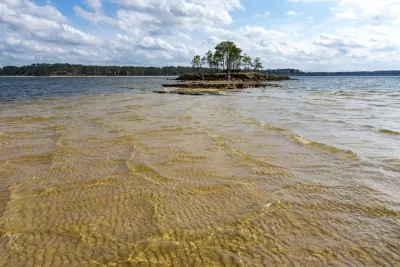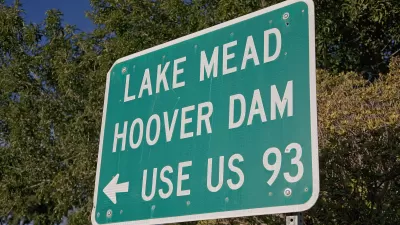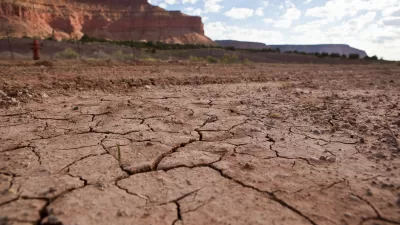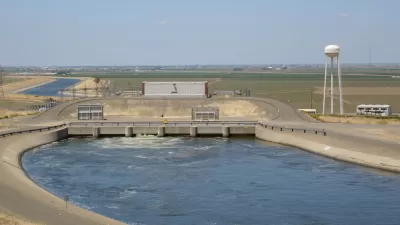The state’s long-term water plan fails to account for the impacts of climate change on water supplies, setting Texas up for a severe water shortage in the coming decades.

Texas officials are ignoring a growing water crisis, warns Erin Douglas in the Texas Tribune, writing that state politicians and agency officials fail to take into account the intensifying effects of climate change. “By late October, water storage in Texas reservoirs had fallen to 67% of capacity, down from 80% a year earlier, according to state data,” Douglas writes.
“Surface water — mainly rivers and reservoirs — accounts for roughly half of Texas’ existing water supply, and is becoming less and less reliable for the state’s fast-growing population as the effects of climate change intensify, experts say.” Yet additional surface water storage is the main tool in Texas’ long-term water plan. “And the Texas Water Development Board, the state agency charged with managing the state’s future water supplies, does not attempt to account for the effects of climate change in its long-term planning,” relying instead solely on data about past droughts.
While state leaders have supported efforts to shore up coastal infrastructure in anticipation of more violent storm surges, “they’ve resisted federal efforts to reduce greenhouse gas emissions that cause climate change — arguing that such efforts would hurt oil and gas jobs in Texas” and have consistently avoided using the term ‘climate change.’
As Dougles explains, “By 2070, demand for water in Texas is expected to increase 9% to 19.2 million acre-feet during a severe drought, up from 17.7 million acre-feet in 2020.” During the same time, the water supply is expected to drop by 18 percent.
See the source article for profiles of several Texas residents affected by water politics and a history of the fight over a new reservoir in the Rio Grande Valley.
FULL STORY: Texas’ plan to provide water for a growing population virtually ignores climate change

Study: Maui’s Plan to Convert Vacation Rentals to Long-Term Housing Could Cause Nearly $1 Billion Economic Loss
The plan would reduce visitor accommodation by 25,% resulting in 1,900 jobs lost.

North Texas Transit Leaders Tout Benefits of TOD for Growing Region
At a summit focused on transit-oriented development, policymakers discussed how North Texas’ expanded light rail system can serve as a tool for economic growth.

Why Should We Subsidize Public Transportation?
Many public transit agencies face financial stress due to rising costs, declining fare revenue, and declining subsidies. Transit advocates must provide a strong business case for increasing public transit funding.

How to Make US Trains Faster
Changes to boarding platforms and a switch to electric trains could improve U.S. passenger rail service without the added cost of high-speed rail.

Columbia’s Revitalized ‘Loop’ Is a Hub for Local Entrepreneurs
A focus on small businesses is helping a commercial corridor in Columbia, Missouri thrive.

Invasive Insect Threatens Minnesota’s Ash Forests
The Emerald Ash Borer is a rapidly spreading invasive pest threatening Minnesota’s ash trees, and homeowners are encouraged to plant diverse replacement species, avoid moving ash firewood, and monitor for signs of infestation.
Urban Design for Planners 1: Software Tools
This six-course series explores essential urban design concepts using open source software and equips planners with the tools they need to participate fully in the urban design process.
Planning for Universal Design
Learn the tools for implementing Universal Design in planning regulations.
City of Santa Clarita
Ascent Environmental
Institute for Housing and Urban Development Studies (IHS)
City of Grandview
Harvard GSD Executive Education
Toledo-Lucas County Plan Commissions
Salt Lake City
NYU Wagner Graduate School of Public Service





























